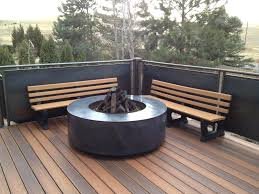Mark,
Pull the code a part anyway you want, but here is a simple look at it.
Inspectors complain all the time about "Climbable Guards" things like cable and pipe, the injury statistics show no problem, but inspectors jump up and down about this all the time, we have seen it right on this forum, time and time again.
The same inspectors that talk about climbable guard designs also tell us, go right ahead and install fixed seating against the guard, there is no problem, because the code tells us to measure from the walking surface.

Thus during the review of Climbable guards by the CTC, the wording was inserted that was similar to that used in bleachers. Thus, though no problem was seen, but wording was added that simply said, if you install fixed seating then you needed to raise the guard height. If you didn't want to raise the guard height, then don't install fixed seating.

Now fast forward, everyone is complaining they have to raise the guard height because the seating is fixed in place, but if not fixed in place the guard height is fine.

Thus, my comment "Go Figure"
Now here is the real question, what is the most common type of guard that is climb over? Well if you review the data, you will find the majority of the time, its solid half height walls

, why you say well my guess is because they can't see what is on the other side and thus climb over to see.

Think about that for a bit.
Regards - Tom


